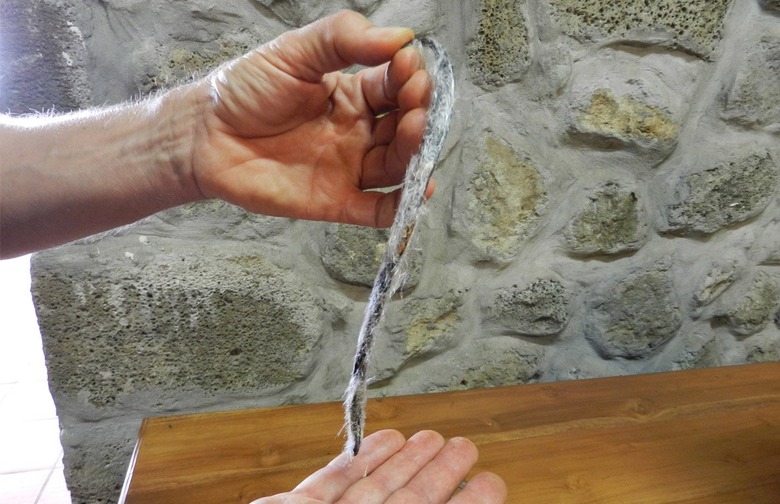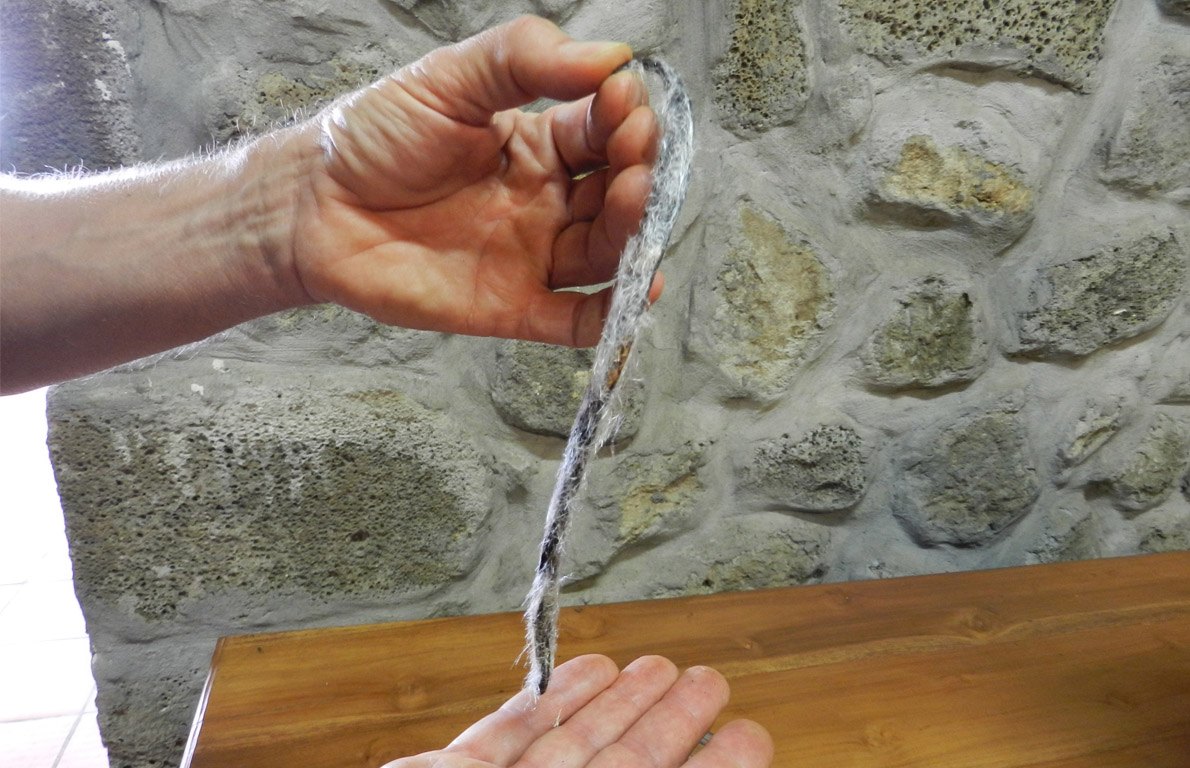Some Of The World's Rarest Vanilla Comes From An Island In The Indian Ocean
On a recent trip to the Île de la Réunion in the Indian Ocean, I had the opportunity to learn a lot about vanilla — a delicate and complex spice whose plants are pollinated here by a process that was invented by a 12-year-old slave.
I talked to Bertrand Côme — director of La Vanilleraie, a vanilla producer on the island's Grand Hazier plantation that produces about a third of the island's crop in rainforest plantings — about his production methods and the vanilla market in general. The Vanilleraie was created in 2009, but Côme has 30 years of experience in vanilla cultivation. "We are working with 30 farmers who produce vanilla on 60 hectares [148 acres], growing 200,000 plants of vanilla," he told me. "We're on the east coast of Réunion because here it rains more than two meters [6.5 feet] per year." Vanilla needs this moisture.
It also needs shade to develop, Côme explained, "because the direct sunlight will burn the leaves. But the vanilla also needs the sunlight to flower. That¹s the reason the vanilla stem climbs up on the trees, to catch the light."
La Vanilleraie sells about 80 percent of its vanilla directly to tourists in its shop; the rest goes to restaurants or ice cream makers on the island.
Côme and his colleagues have identified 15 different types of vanilla in the forest, and are experimenting with them to obtain the best quality. They are also looking at the effect of the terrain. "It looks like the flavor depends on the soil and climate, as it does for wine," he said.
The total world production of vanilla is between 2,000 and 2,500 tons of cured, dried pods, depending on the weather in growing regions. It takes as much as five tons of green pods to produce one ton of the dried black ones; the entire production of Réunion is about three tons a year — and last year, because of unusually hot weather, the yield was half that.
Only about 2 percent of each pod is vanillin, the organic compound responsible for the familiar flavor and aroma of the spice, meaning that 2,000 tons of pods translates to only 40 tons of vanillin. "The industry needs 12,000 tons a year," Côme said, "so nearly all the vanilla flavoring used in the world is synthetic." He predicts that pure natural vanilla will eventually become a real luxury product.
"Vanilla is a native of Mexico," Côme explained, "and over there, there are small bees called melipone which naturally pollinate 10 percent of the flowers. On Réunion, we haven't got these bees and our bees are too big to enter the vanilla flowers. That's the reason why we have to hand-pollinate each flower to replace the bees. The process was discovered by a young slave of 12 years named Edmond Albius in 1841."
The vanilla flower season runs from September through December. The pods take nine months to ripen. Each plant in the forest produces about 20 pods, one per flower. (A tiny fraction of La Vanilleraie's vanilla plants grown in an experimental greenhouse, where they can yield up to 50 pods each.) "One worker is able to hand pollinate 300 flowers per hour, 2,000 flowers per day, between 6 a.m. and noon," Côme explained. "One person is able to hand-pollinate 1.5 hectares [about 3 3/4 acres] — about 5,000 plants — each season, so, we need 40 workers to do the job every year."
Women do the pollination work, Côme said, because they tend to have a softer touch with the flowers than men. "The pollination has been successful," he continued, "when the flower dries on the top of the pod. If it falls down after two or three days, the pollination failed."
Côme detailed the curing and drying process: "We pick the pods when the bottoms become yellow, just before they split, for good quality. If we pick too early, the pods contain less aroma. Then, we have to put the pods into 65-degree C [150-degree F] water for three minutes to kill the pods and stop them opening. We call this operation the curing. After that, we put them into boxes covered by blankets to keep them warm for a day — the sweating operation. During this day, the pods change color from green to brown. We continue the process with drying, at first for two weeks in the sun on wooden racks for five hours a day, then for two to three months in the shade.
"When the vanilla is dry enough, having lost about half of its moisture, we put it into maturation boxes for one year. But we have to check once a month to remove any pods with fungus, mold, or disease." After maturation, the pods are gathered into bundles of 60 and stored until they're sold.
La Vanilleraie's bestseller is a glass tube containing three pods of special vanilla, called vanille givrée, "frozen vanilla." Côme compares it to ice wine, made with grapes frozen on the vines. The pods are harvested late then undergo a secret process and two years of maturation. Through this process, Côme said, "a part of the aroma, the vanillin molecules, goes out through the skins and crystalizes by contact with the air. These pods contain twice the aroma of standard vanilla. Great chefs like to use these pods because there are the best ones."
In buying vanilla, whatever its source, Côme advised to look for pods that are dark brown, oily, and flexible. It's said that you should be able to tie one into a knot. A new process, developed in Madagascar and used by some producers in Réunion, consists of not drying the pods as much as usual, leaving them heavier and containing more moisture. These are called "fresh vanilla," which sounds like a good thing, but such pods store poorly because of their increased humidity and have less aroma.
As much as 90 percent of the vanilla sold today is fresh vanilla. "Never buy it," Côme said emphatically.

